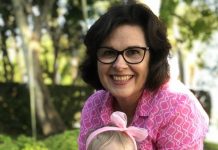As districts design and remodel school buildings, they are working on a belief that classrooms should mirror the workplaces of today and the future
High school students in Irving, Texas, are using a mix of digital tools to learn about sustainable energy in their new “net zero” school building, which produces as much energy as it consumes. In Woodbury, Minn., technology-rich classrooms are grouped into small learning communities of nine classrooms each, with a learning-resource center for each pod intended for collaborative work. The Marysville Getchell High School campus outside Seattle, a complex of four small high schools built in 2010, features flexible learning spaces that can accommodate small classes or big groups and a mix of interactive learning technologies.
As school districts plan and design new buildings, a philosophical shift in how learning environments look is happening, fueled largely by technological advancements and a belief that classrooms should be more interactive and mirror the workplaces of today and the future. That new look puts a high priority on small-group work, use of mobile devices, and project-based digital learning.
Even though not all districts are constructing new buildings, experts say many of the same principles can be applied to existing buildings.
Gaylaird Christopher, the president of Architecture for Education, a Pasadena, Calif.-based firm that works on school building projects, says even though districts are working under tight budgets, many are trying to be ambitious and creative in changing how schools are designed to meet the needs of a generation of students who expect high-quality digital environments. More than anything, schools need to get away from designs that encourage putting students in desks in rows in isolated classrooms, he says.
Other school building experts echo Christopher.
“The current challenge is that we’re seeing and pushing schools to move away from the kind of classic, spreadsheet layout, particularly when you get into the higher grades,” says David M. Zaiser, a partner at KSS Architects, who manages the company’s Philadelphia office. “The classroom environment is supposed to be about interaction.”
‘A Living Laboratory’
At Lady Bird Johnson Middle School, which opened in August 2011 in the fast-growing Irving Independent School District in Texas, the 950 students have firsthand experience with technology-enhanced project-based learning.
The school is a net-zero building, meaning it produces as much energy as it consumes, using a variety of geothermal techniques to conserve energy, including rain-water collection, gray-water harvesting, natural daylight in classrooms, and geothermal heat pumps. It also employs solar technology and wind turbines to produce energy.
The school is divided into four learning modules in different wings of the building, each with a theme: geothermal, wind energy, solar energy, and water conservation. Through interactive digital displays in an informal museum-like setting, students learn about how those techniques help conserve and produce energy.
The concepts are also incorporated into the curriculum, which emphasizes science, math, and environmental education.
Students engage in project-based learning using the school’s facilities. For instance, they collect and use data from the school’s energy-conservation and -production features to compare energy resources at the school with the use of fossil fuels. Students from around the district visit Lady Bird Johnson Middle School to learn how wind turbines and solar panels produce energy, and how such technologies are designed.
“The school is actually what we call a living laboratory,” says Scott Layne, the assistant superintendent of school support services for the Irving district. “The days of a teacher standing in front of a class and lecturing doesn’t work anymore at the K-12 level. It’s got to be interactive.”
The school was financed through a bond referendum that was passed in 2007 and included $290 million for new construction and renovations across the 34,000-student district. Although the school cost about 10 percent more to build than the average school building, it received about $1 million in rebates in its first year of operation from the electric company because of the efficiencies it had put in place, says Layne.
The median cost of a new high school building completed in 2011 is $39 million, according to the 2012 Annual School Construction Report.
Beyond the learning modules within the building focused on energy, the school is primarily wireless, with one hard-wire connection in each room to comply with testing requirements, he says, and each classroom also features an interactive whiteboard and digital projector.
Beyond those features, most of the one-person student desks have been replaced with tables for groups of four to six students to work together, says Layne. And students have access to iPads, netbooks, and laptops that move around the school on carts.
“Allowing students to use different devices for different types of classes helps to pique their interest,” Layne says.
Unlike high schoolers in the Irving district—who each receive a laptop computer to take home—the middle schoolers are required to leave the devices at school overnight, where they are placed in the carts and recharged.
Because of the access students have to technology, Lady Bird Johnson Middle School is moving toward a paperless model, says Layne, with students turning in homework online, and teachers grading their work and sending it back through the network.
Similarly, the Gateway Community Charters network—a nonprofit, Sacramento, Calif.-based group of charter schools—plans to allow students to learn from the school building now being designed for students in grades K-8, says Michael Gillespie, the network’s assistant superintendent.
For instance, the school, which will focus on the STEM subjects—science, technology, engineering, and math—will have exposed beams in the ceiling to demonstrate engineering techniques.
It will also feature classrooms with large roll-up doors that can be opened when more space is needed, as well as built-in spaces for carts of laptops in each classroom.
For now, the architects are planning details such as where the interactive whiteboards will be located and how many electrical outlets will be in each classroom, says Gillespie. Plans are to be drawn in the coming months, with groundbreaking expected in the summer of 2014, he says.
College and Careers
At the 1,800-student East Ridge High School outside Minneapolis, which opened in 2009, students are getting the 21st-century learning experience that school officials envisioned when the building was designed.
The school is broken up into six smaller learning communities made up of nine classrooms each, with breakaway spaces called learning-resource centers for student and teacher collaboration. It also features a “main street” design that links all six learning communities to encourage school unity.
“Technology is one of the … core areas that we really strive to embed in all we do,” says Aaron Harper, the principal of the school, which is part of the 17,300-student South Washington County school district.
Each classroom at East Ridge High is equipped with an interactive whiteboard, projector, and student-response system, and—as at Lady Bird Johnson Middle School—rolling carts of devices such as laptops, netbooks, and iPads rotate throughout the school.
In addition, the school allows students to bring in their own devices to connect to the wireless network.
“We come at it more from a college-campus view,” Harper says of the flexibility allowed students in tapping technology.
The science and engineering equipment available at the school has paved the way for East Ridge to be one of the first high schools in the country certified to teach engineering and biomedical sciences, says Harper. “Those experiences have just been invaluable in terms of advancing [student] learning,” he says.
Harper was brought on during the planning and development phase of the construction and was able to talk with the architects and designers about his vision for the school.
Starting from scratch with a new school allowed his teachers to rethink the way they used technology, he says, but it has still been a challenge to bring all the teachers sufficiently up to speed to adopt and integrate the technology into their classrooms.
This school year, East Ridge High has moved to a blended model for some of its classes, allowing students to come into the building two or three days a week while they complete the rest of the courses at home through the Internet.
Blended learning may not be right for every student, says Harper, but for certain students, it could be an option worth exploring. He hopes to expand the blended courses to include 20 to 30 different courses within the next few years.
Mobile Moves
Although both East Ridge High School and Lady Bird Johnson Middle School use interactive whiteboards, Irene Nigaglioni, a partner at PBK, an architecture and engineering consulting firm, says that some schools are moving away from such fixed technology in favor of more mobile solutions. For example, new technology is being developed to turn iPads or iPhones into projectors, she says.
Some schools are also buying large flat-screen TVs instead of whiteboards as prices come down enough to make such purchases feasible for schools, she says.
Choosing the technology should always be the last step when building a new school, advises Nigaglioni, because of how quickly it can change, and keeping the space flexible is critical to being able to accommodate those changes.
Victoria Bergsagel, the founder and director of Architects of Achievement, a Mercer Island, Wash.-based education design consulting firm, says that when it comes to the design of school buildings, K-12 leaders have been slow to innovate.
“Unfortunately, if Rip Van Winkle were to wake up today, he’d probably still recognize our schools,” she says. “We went from the industrial age to the information age, and we’re kind of going into the innovation age, but if you look at our schools, they still look like that factory model with cells and bells, especially in the upper grades.”
But some schools are setting out to break the mold, she says, and project-based, hands-on learning is becoming a major part of that trend.
“Schools are designing spaces where students can make things more,” says Bergsagel. “The 21st-century school looks more like the 21st-century workplace. Kids should be makers of new technologies, not just consumers.”
Using flexible furniture in classroom spaces can help make the environment easily adaptable for many uses, she says. Bergsagel suggests putting wheels on all the furniture, making sure to use lockable wheels for items such as lab tables.
Another way to keep the space flexible is to use fold-up tables and chairs that can be easily moved out of the way to create a large space.
It is important to make sure that the load-bearing walls are built around the outermost edge of the building so that the interior walls may be knocked down or moved around without compromising the stability of the school structure, Bergsagel says.
Her company worked with the 11,000-student Marysville school district outside of Seattle to facilitate the design of the new Marysville Getchell High School campus by guiding community meetings, suggesting design elements, and helping the district choose an architect.
Four small learning communities, each with a separate building and principal, are located on one campus connected by outdoor bridges.
The school also has a separate building—featuring a dining room, a gym, and a community space—where students from any of the four smaller schools can gather. Total enrollment is about 1,600 students between the four small schools.
Each of the four schools employs many of the flexible features that Bergsagel outlines, including furniture with wheels, exterior load-bearing walls, and interior windows—from the classrooms to the hallway, for example, to help increase the amount of natural light.
In addition, each of the small schools has an open area in which all the students in that school can gather to take part in group activities, says Bergsagel.
She encourages other architects to include students in the design process when looking for ideas on how to improve learning spaces.
“Kids will tell us tremendous things, if we only listen to them,” she says.













